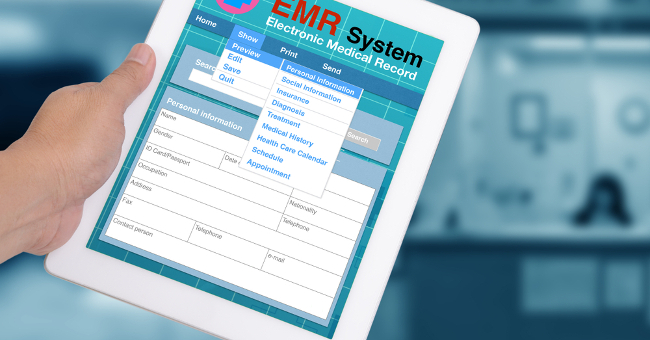Embarking on a journey into the captivating world of STEM (Science, Technology, Engineering, and Mathematics) may seem like navigating uncharted territories, filled with fears of inadequacy and complex concepts. However, fear not! This article serves as your compass, guiding you through challenges and illuminating the path to fulfilling your STEM aspirations.
Fueling Your Passion: Igniting the Spark of Curiosity
Debunking STEM Stereotypes
STEM is often unfairly portrayed as a bland landscape of equations and lab coats. In reality, this field is a vibrant canvas, pulsating with the thrill of discovery and the power to shape the future. Imagine coding robots that dance and interact with humans, designing innovative prosthetics that empower individuals with disabilities, unraveling the mysteries of the human brain and consciousness, and devising solutions to combat climate change. Every question, experiment, and line of code is a brushstroke on the canvas of innovation, turning you into an artist in the grand theater of science and technology.
Finding Your Niche
STEM encompasses a vast spectrum of disciplines, each offering unique opportunities to explore your passions and make a difference.
- Science: Dive into the wonders of biology, from the intricacies of cells to the vastness of ecosystems. Uncover the secrets of chemistry, physics, astronomy, and more.
- Technology: Delve into the world of computer science, where coding, artificial intelligence, robotics, and digital innovation open doors to endless possibilities.
- Engineering: Design and build structures that shape our world – from bridges and spacecraft to sustainable energy systems and life-saving medical devices.
- Mathematics: Discover the beauty of numbers, patterns, and problem-solving, with applications ranging from finance to data science.
Active Engagement Through Hands-on Learning
STEM truly comes alive when actively engaged. Seek opportunities to:
- Conduct experiments and collect data: Take a hands-on approach to learning by conducting experiments that bring theoretical concepts to life.
- Build prototypes and test your ideas: Transform your ideas into tangible solutions by creating prototypes and testing them in real-world scenarios.
- Participate in science fairs, hackathons, and STEM competitions: Showcase your skills and innovation by participating in events that challenge and inspire.
- Join STEM clubs and extracurricular activities: Connect with like-minded individuals and explore collaborative projects that go beyond the classroom.
- Volunteer in STEM-related organizations: Contribute to real-world projects and make a positive impact on your community through STEM-focused volunteer opportunities.
Finding Inspiration in Role Models
Connect with inspiring stories of diverse STEM professionals who have made a profound impact on the world. Discover their journeys, challenges, and triumphs. These individuals serve as beacons of possibility, demonstrating that anyone, regardless of background or perceived limitations, can contribute meaningfully to STEM fields.
Building Your Foundation: Essential Skills for Success
Critical Thinking and Problem-Solving
STEM success hinges on your ability to think critically, analyze information, identify problems, and devise creative solutions. Cultivate these skills through:
- Engaging in open-ended discussions and debates: Develop your ability to think critically by participating in discussions that challenge your perspectives.
- Participating in STEM challenges and puzzles: Sharpen your problem-solving skills by tackling challenging puzzles and participating in STEM-focused challenges.
- Analyzing real-world scenarios and case studies: Apply your knowledge to real-world situations, enhancing your ability to think critically and make informed decisions.
Effective Communication
Clear and concise communication is paramount, both within STEM fields and in collaboration with diverse audiences. Hone your skills in:
- Writing detailed reports, research papers, and grant proposals: Articulate your findings and ideas in a clear and compelling manner through written communication.
- Presenting your findings confidently in oral presentations and discussions: Develop effective verbal communication skills to convey complex concepts with clarity.
- Visualizing data effectively through charts, graphs, and infographics: Enhance your ability to communicate complex information visually, making it accessible to a broader audience.
Collaboration and Teamwork
Scientific breakthroughs often emerge from the synergy of diverse minds. Embrace teamwork and learn to:
- Contribute effectively to group projects: Develop the ability to work collaboratively, combining your strengths with others to achieve common goals.
- Respect and value different perspectives and approaches: Cultivate an inclusive mindset that recognizes the value of diverse perspectives in problem-solving.
- Communicate and resolve conflicts constructively: Learn to navigate disagreements positively, fostering a collaborative and productive working environment.
Perseverance and Resilience
STEM journeys are not without setbacks. Cultivate grit and resilience to:
- Embrace challenges as opportunities for growth: View challenges as stepping stones to personal and professional development.
- Learn from failures and setbacks: Extract valuable lessons from failures, turning them into opportunities for improvement.
- Persist in the face of obstacles: Develop the resilience to overcome obstacles and continue pursuing your goals, no matter the challenges.
Navigating the Journey: Practical Tips and Resources
Choosing the Right Path
Navigate academic choices strategically to align with your interests and aspirations. Consider:
- Selecting courses that spark your curiosity: Tailor your academic journey to explore subjects that genuinely interest you.
- Participating in STEM-focused extracurricular activities: Expand your learning beyond the classroom by engaging in activities that align with your STEM interests.
- Seeking research opportunities with professors or in labs: Gain hands-on experience and contribute to cutting-edge research by seeking out research opportunities.
- Attending STEM summer camps or enrichment programs: Immerse yourself in intensive learning experiences that provide a deeper understanding of STEM disciplines.
Building a Support Network
Surround yourself with individuals who believe in you and encourage your growth. Seek guidance from:
- Teachers and professors: Tap into the knowledge and expertise of educators who can provide valuable insights into your STEM journey.
- Mentors in STEM fields: Connect with professionals who can offer guidance, share their experiences, and provide mentorship in your chosen field.
- Peers who share your interests: Build a network of like-minded individuals who can offer support, collaboration, and a sense of community.
- Online communities and forums: Engage with virtual communities to connect with individuals worldwide, expanding your perspectives and opportunities.
Conclusion
In the vast landscape of STEM, the journey is as significant as the destination. Embrace the challenges, nurture your curiosity, and persist in the face of setbacks. Remember that success in STEM is not just about mastering equations or conducting experiments; it’s about becoming an artist, a problem-solver, and a collaborator in the grand theater of science and technology. With the right mindset, skills, and support network, you can unlock a world of possibilities and contribute meaningfully to shaping the future. Your STEM journey awaits – start painting your masterpiece today.












